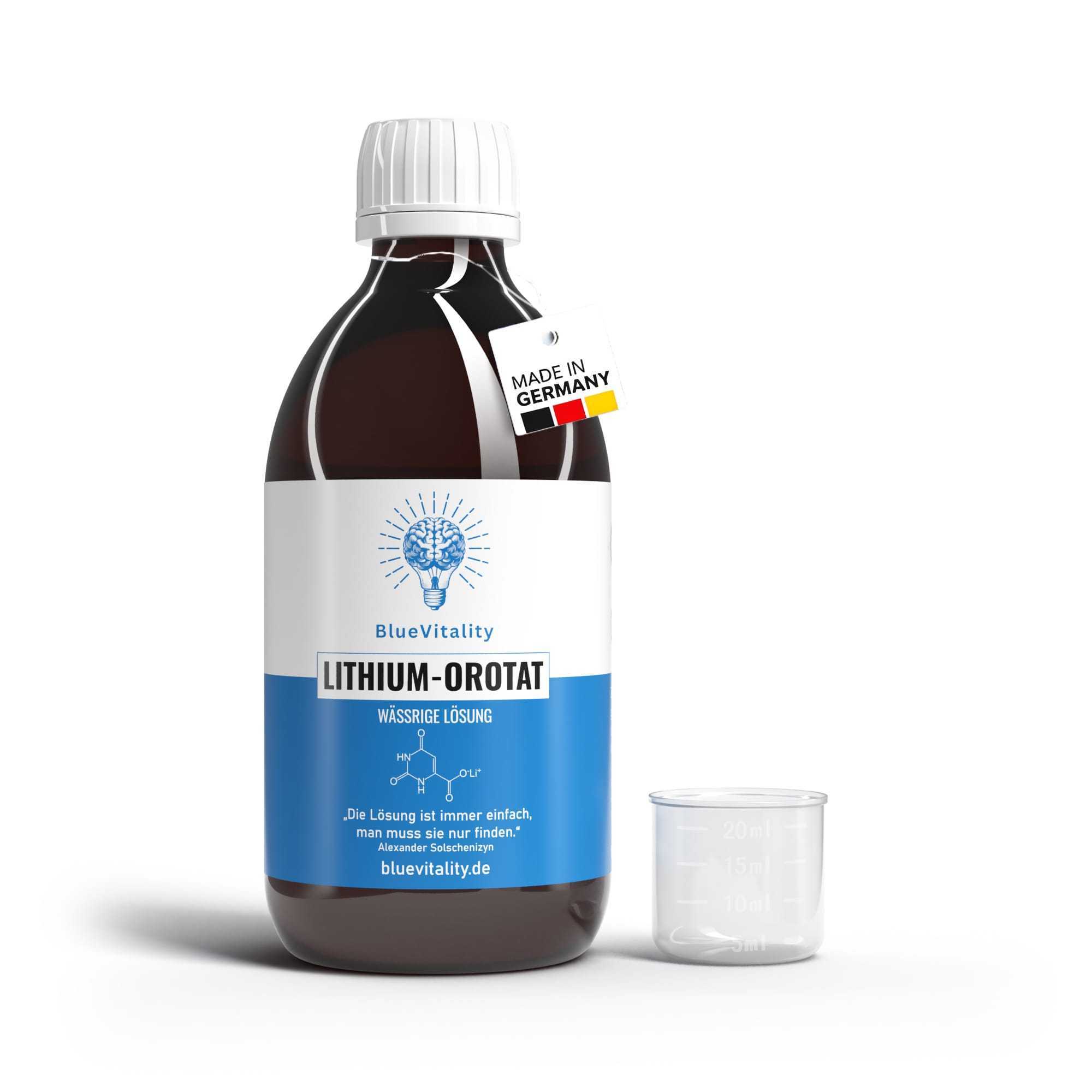Methylene Blue: The Renaissance of a Versatile Medical Tool
In modern medicine, Methylene blue has experienced a fascinating renaissance, emerging as a versatile tool with impressive therapeutic properties. Originally developed as a textile dye, it has evolved into a valuable active ingredient used in various areas of medical practice. Its history dates back to the 19th century, when the German chemist Heinrich Caro the molecule first synthesized. Since then, it has made a remarkable journey through medical history, proving to be an indispensable tool crucial in the treatment of various diseases and medical conditions. Let's take a closer look at the innovations and applications in modern medicine and discover how this remarkable molecule continues to revolutionize medical practice.
The pioneering days of methylene blue in medicine: From its beginnings to the discovery of its therapeutic potential
Its first use in medicine dates back to the 19th century, when the German chemist Heinrich Caro synthesized the molecule. Initially, it was used primarily as a stain in microscopic examinations, but its potentially therapeutic properties were soon discovered.
Early applications against malaria and infections
The history of methylene blue in medicine took a turn when doctors began to use it to treat malaria At that time, malaria was a widespread and dangerous disease for which there was no effective treatment. However, it proved to be an effective remedy against malaria parasites . and offered some relief to those affected by this disease. In addition, it was also used disinfection of wounds and to treat infections, establishing it as a versatile tool in medical practice.
Discovery of therapeutic potential
However, one of the most fascinating discoveries was the accidental observation that in patients in psychiatric Institutions that received it as a marker for monitoring medication use saw an improvement in the symptoms of neurological disorders. Those treated with methylene blue were found to show a significant improvement in their mood, leading to further research and discoveries about its potential neuroprotective properties. These findings opened the door to a new era of medical research in which it was viewed as a promising treatment for neurological disorders.
Methylene blue in surgery: visualization of lymphatic vessels and parathyroid tumors
It has been in the surgery has proven to be an extremely useful tool, particularly in the visualization of lymphatic vessels and parathyroid tumors. These applications are crucial for precise surgical interventions, helping to minimize the risk of complications and improve surgical accuracy.
Visualization of lymphatic vessels
When performing operations in the field of oncology or Lymph node removal The precise localization and visualization of lymphatic vessels is crucial. intravenously injected and enters the lymphatic system, causing Lymphatic vessels colored blue and can be more easily identified. This technique, known as Lymphography with methylene blue, allows surgeons to accurately track the course of the lymphatic vessels during the procedure and to precisely identify and remove the lymph nodes.
Visualization of parathyroid tumors
Parathyroid tumors that occur in the Parathyroid glands They can be difficult to locate and often require precise surgical removal. It is used in parathyroid surgery as a dye to visualize the tumors during the procedure. When injected into the surrounding tissue, parathyroid tumors are stained blue, making it easier for surgeons to distinguish them from healthy tissue and perform precise resection.
Improving surgical precision and patient safety
The use of methylene blue in surgery has significantly improved surgical precision and patient safety. By visualizing lymphatic vessels, surgeons can reduce the risk of lymphedema and lymphatic vessel injury, while precise localization of parathyroid tumors enables successful removal and thus improved patient outcomes.
An indispensable tool for modern surgery
Overall, it is an indispensable tool for modern surgery, helping to improve the accuracy and safety of surgical procedures. The visualization of lymphatic vessels and parathyroid tumors is an example of the innovative application of this dye in surgery, helping to improve the quality of patient care and achieve positive patient outcomes.
Methylene blue in the treatment of septic shock and methemoglobinemia
It has proven to be a life-saving therapeutic option in the treatment of septic shock and Methemoglobinemia In both cases, it plays a crucial role in restoring cellular function and improving life-threatening conditions.
Treatment of septic shock
Septic shock is a life-threatening condition caused by an overwhelming immune response caused by an infection and can lead to life-threatening organ dysfunction. It acts as a redox agent that reduces oxidative stress and restores cellular function. Through its ability to Energy metabolism to improve and Vasodilation to promote, it can Blood pressure stability restore and significantly reduce mortality in septic shock.
Treatment of methemoglobinemia
Methemoglobinemia is a rare but potentially life-threatening disorder in which too much Methemoglobin present in the blood, which impairs the oxygen-binding capacity of hemoglobin. It is an effective antidote for methemoglobinemia because it has the ability to reduce the reduced hemoglobin to methemoglobin and thus improve the oxygen-binding capacity of the blood. By administering it, the oxygenation of the blood is quickly restored and life-threatening symptoms such as cyanosis and shortness of breath can be relieved.
An indispensable therapeutic agent in emergency medicine
Overall, it is an essential therapeutic agent in emergency medicine that can be life-saving in the treatment of septic shock and methemoglobinemia. Its ability to reduce oxidative stress and improve the oxygen-carrying capacity of the blood makes it an effective agent for stabilizing life-threatening conditions and improving patient care in emergency situations.
Methylene blue in neurology: A promising hope for the treatment of neurodegenerative diseases
The role of methylene blue as a potential therapeutic option for neurodegenerative diseases such as Alzheimer's , Parkinson and Amyotrophic lateral sclerosis has attracted much attention in neurology. Previous research suggests that Methylene blue could be a promising candidate for the development of new therapies to treat these serious diseases.
Improvement of mitochondrial function and reduction of oxidative stress
Improvement of mitochondrial function:
Mitochondria are the energy powerhouses of the cell and play an essential role in providing energy for neuronal processes in the brain. Disturbed mitochondrial function leads to an energy deficiency in the Neurons , which in turn can lead to cellular stress, cell death, and ultimately the progression of neurodegenerative diseases. Methylene blue has been shown to improve mitochondrial function by supporting electron transport in the mitochondrial respiratory chain and increasing energy production. This may help maintain neuronal energy homeostasis and prevent cell death, which could slow the progression of neurodegenerative diseases.
Reduction of oxidative stress
Oxidative stress occurs when the balance between oxidative and antioxidant processes is disturbed and the production of reactive oxygen species (ROS) is increased. These ROS can damage cell structures such as lipids , Proteins and DNA damage and thus contribute to neuronal dysfunction and cell death, which in turn promotes the progression of neurodegenerative diseases. Methylene blue has been shown to reduce the production of ROS by acting as an effective ROS scavenger and preventing oxidative damage in neurons. This may help maintain neuronal integrity and prevent cell death, which could slow the progression of neurodegenerative diseases.
Overall, methylene blue's improvement in mitochondrial function and reduction of oxidative stress contribute to maintaining neuronal function, increasing neuronal survival, and thus slowing or even halting the progression of neurodegenerative diseases. This makes it a promising candidate for the development of new therapies to treat these serious diseases.
Characteristic features of neurodegenerative diseases
One of the main causes of neurodegenerative diseases is the abnormal accumulation of misfolded proteins in the brain, which can accumulate into toxic deposits. Alzheimer's disease is characterized by beta-amyloid plaques and tau protein deposits, while Parkinson's disease is characterized by alpha-synuclein aggregates in neurons. These protein deposits disrupt normal neuronal function and ultimately lead to neuronal death and disease progression.
Inhibition of the formation of protein deposits by methylene blue
It has shown promise as a means of inhibiting or even reversing the formation of these harmful protein deposits. Through various mechanisms, including interacting with the aggregating proteins and promoting their correct folding, methylene blue can reduce the formation of beta-amyloid plaques in Alzheimer's disease and alpha-synuclein aggregates in Parkinson's disease. Furthermore, methylene blue has been shown to dissolve existing protein deposits and promote the resolution of disease symptoms.
Potentially slowing or even stopping disease progression
The inhibition of the formation of protein deposits by Methylene blue can potentially help slow or even halt the progression of neurodegenerative diseases. By reducing the accumulation of toxic protein deposits in the brain, it can improve neuronal function, prevent cell death, and alleviate the symptoms of the diseases. This makes it a promising candidate for the development of new therapies to treat Alzheimer's, Parkinson's, and other neurodegenerative diseases.
Overall, the ability of Methylene blue , to inhibit the formation of protein deposits, offers promising hope for the development of effective treatments to slow or even prevent the progression of neurodegenerative diseases.
A new era in the treatment of neurodegenerative diseases
Overall, research into the use of Methylene blue In neurology, a new era in the treatment of neurodegenerative diseases is being ushered in. Due to its diverse mechanisms of action and promising results in preclinical and clinical studies, methylene blue could play a significant role in the development of new therapies that could slow or even halt the progression of these diseases.
Conclusion: Methylene blue - A versatile tool in modern medicine
It has established itself as a versatile and highly effective tool in modern medicine, widely used in various fields. From surgery to emergency medicine to neurology, it offers a wide range of applications that enable life-saving treatments and improve patients' quality of life.
Continuous research and innovation
Through continuous research and innovation, Methylene blue will continue to play an important role in medicine in the future. New applications and therapies are being developed to exploit the full potential of this versatile molecule and open up new ways to treat diseases. The constant search for improvements and innovations will ensure that methylene blue remains an indispensable component in modern medicine.
A look into the future
Given its versatile applications and broad spectrum of uses, it will continue to play an essential role in modern medicine in the future. By combining proven applications with new developments, Methylene blue contribute to improving patient care and promoting the health and well-being of people worldwide.





